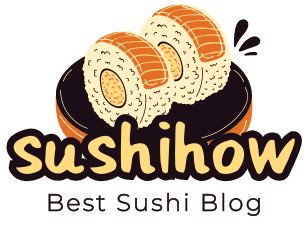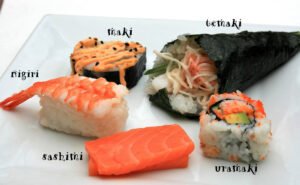When most people think of sushi, they envision either nigirizushi or makizushi: pieces of fresh fish, seafood or meat laid atop vinegared rice and hand-formed into bite-size morsels by an expert sushi chef. But Japanese sushi offers much more variety.
Regional cuisines across Japan influenced this form of sushi evolution. Here are five distinct regional styles you should be sure to sample when in Japan!
Kanazawa
Kanazawa, located along Japan’s Sea of Japan coast, offers visitors peace and serenity. Home to Kenroku-en garden (one of Japan’s three top gardens) and geisha districts reminiscent of Kyoto, Kanazawa has something special on offer: its cuisine is far more diverse than expected with regional ingredients meeting international fusion cuisine as well as traditional crafts to form its distinctive cuisine.
Omicho Market’s proximity to the Sea of Japan provides you with an abundance of seafood, which you can best experience through kaisen-don. There are numerous restaurants specializing in this dish in Omicho Market; for something truly memorable we suggest Itaru Honten where the owner’s young siblings specialize in creating mouthwatering pieces of fresh local fish such as black-throat seaperch and gasu ebi with exceptional skill and speed – and many local residents praise their ability and speed in creating this treat for guests!
Kabura sushi, created from herring from the Seto Sea marinated in koji with strips of turnip, offers sweet-and-spicy with an intense umami punch; enjoy this dish alongside rice and sake for maximum pleasure! You may need plenty of patience but this type of sushi will definitely pay off!
Kyushu
People typically associate sushi with hand-pressed varieties such as nigirizushi (hand-pressed sushi made of fish or seafood atop vinegar rice), makizushi (rolled sushi made with fish meat and vegetables in seaweed sheet), or temaki (a hand roll that resembles an ice cream cone). But Japan offers many more inventive variations of this delicate cuisine.
Kyushu’s coastal regions – particularly Fukuoka and Kagoshima – are well known for their extraordinary local fish preparations, particularly their unique take on nare sushi made with salty sardine combined with vinegar rice to produce an irresistibly sweet-and-savory experience.
Temari sushi takes inspiration from traditional Japanese handball toys. Crafted by hand, this small, spherical variation of sushi can be filled with fresh fish, seafood, tamago (egg omelette) or different vegetables depending on what kind of Sosakuzushi it is (unrestricted by Edo-style rules and thus open to creativity), while Saga features one that features whole saury (Sakuramasu) cut down its back and spread over vinegar rice before being compressed slightly for shape creation – perfect when visiting Okawachiyama for its unique vibe!
Osaka
Osaka is often considered the nation’s kitchen, known for its delicious sushi and ramen offerings as well as other delectable culinary creations such as box of vinegared white-sheet kelp atop mackerel to an entire rectangular crab sushi neatly packed into a bento box, Osaka offers plenty of mouth-watering choices for any sushi fanatic to satisfy their palate.
Takoyaki, an iconic Okinawa and Osaka street food, can also be found at Dotonbori – its lesser-known counterpart is known as Akashiyaki; an innovative dish composed of batter stuffed with pieces of octopus cooked individually on a gridder with indentions for even cooking and then garnished with mayonnaise, green seaweed powder and bonito flakes for a tasty meal in its own right or used as an appetizer before takoyaki is offered!
Osaka is a relaxing port city with a fun, vibrant vibe and delicious street foods created with care – whether that means indulging in informal kappo (family-style) dinners or sipping matcha at stylishly austere tea houses.
Hakodate
Hakodate’s maritime identity as one of the first ports to engage in international trade is reflected in its seafood cuisine: succulent squid, delectable crab, and melt-in-your-mouth scallops are highly prized here.
The region is famous for kaisendon, a delicious bowl of steaming rice topped with raw fish or seafood such as salmon roe, uni (sea urchin) or shrimp sashimi and shrimp. Visitors should definitely experience it while in Tokyo!
At the bustling morning market in Fukuoka City, Japan you’ll have many chances to sample kaisendon and experience its exquisite aroma at one of 300 stores selling seafood, fruit, household goods and much more. Don’t miss kakinoha-zushi; an extraordinary type of sushi wrapped in persimmon leaves which was used extensively before refrigeration systems became common and adds an aromatic component.
At this market, there are also restaurants serving soup curry – an ancient Japanese and Indian-influenced cuisine combining Japanese and Indian flavors – as well as shops that provide live squid fishing experiences – be sure to stop by!
Hokkaido
Northern Japan is home to some unforgettable wilderness adventures and tasty seafood dishes, from horsehair crab kegani that can be cooked raw, boiled or grilled to shiitake mushrooms, squid and even shredded omelette. Any sushi enthusiast would surely appreciate such delicacies!
One of the more interesting forms of figure sushi is ikameshi, a form crafted using both glutinous and non-glutinous rice stuffed with cured seafood or fish. A traditional method is using dots from gizzard shad, giving this sushi its distinctive boat-like shape.
Popular figures of Hokkaido cuisine include masu salmon (sakuramasu) which is made by spreading vinegar rice with salmon spread on top, before shaping and pressing it to form a square; or kiritanpo, a molded stick of rice wrapped with Japanese cedar and grilled. You may also add fragrance with salted sakura leaf which adds both fragrance and visual delight while its delicate flavour adds delicate notes to this delicate dish. Kaisen-don, or salmon hot pot is another iconic dish from Hokkaido!



